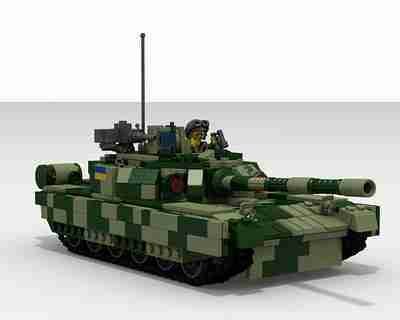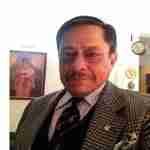Driving a battle tank can range from fun to fatigue in peacetime and frightful to fatal during war. Either way, it is unusual because, like a boat, it pitches, yaws or rolls depending on the kind of terrain it is negotiating and you steer it without a steering wheel or a handlebar. Like the joystick in an aircraft, there are sticks on either side of the driver to be pulled to turn the tank. The gears in most tanks are operated by a floor shift gear lever in between the driver’s legs or in a few cases, automatic — no gear lever or clutch pedal — just the accelerator and foot brake.
The Armoured Corps is what used to be Cavalry in most armies. It is only after World War I that the process of mechanisation of cavalry units in armies began. Common to both equestrian and tank training is that the student spends some weeks just being made to study the steed or armoured vehicle from all directions and planes in the stables/classrooms/garages before mounting and riding or driving it, respectively. Use of weaponry from/on either comes later.
The ‘Centurian’ tank drive
The thumb rule for any personnel riding ‘piggy-back’ on any tank are that they must hold on to some part of the tank to prevent being jettisoned off. In this tale, the first tank I trained on was the good old trusty World War II vintage “Centurian” and second was the “Vijayanta”, an indigenously made copy of the Vickers. While I trained on more tanks also this tale is of driving two named tanks during training, which ended well, in the sense that in the first case of the Centurian and in the second case my colleague both underwent some ‘remarkable but quite repairable damage’.
There came a very awkward grunting kind of sound followed by the tank’s sudden lateral movement to the right, which ended with a great thud.
During the first basic course for newly commissioned officers YOs (young officers) at the Armoured Corps School and Centre at Ahmadnagar, Maharashtra, popularly known as “Nugger”, it was our second day of tank driving as the final part of the D&M (Driving and Maintenance) phase. On the first day, we had been driving over open stretches with gentle gradients. The next day’s schedule was negotiating restricted stretches like dry river beds. When my turn came, while I settled in the driver’s seat, then 2/Lt Ashok Sharma, 3rd Cavalry, was in the commander’s hatch.

The instructor, an impressively moustachioed Dafadar (Sergeant) Hemraj Singh, of 64th Cavalry sat the forward edge of the mudguard on the right side of the hull, close to the driver’s hatch, with a pointer — staff to signal his instructions. Waiving the pointer — staff forward (no matter how loud, the human voice cannot be heard with the tank engine’s noise), he bade me to move ahead and with a gentle lurch we were off into the dry river bed — soon cruising on fifth gear at about 30 kmph.
After a couple of kms, the negotiable stretch of the river bed became so narrow that I had to keep my left track on the left bank. I was planning to make a slow right turn when this constriction opened out but the instructor, who was not too comfortable on the tilted tank, frantically waved his pointer staff to the right and I pulled the right stick swiftly. There came a very awkward grunting kind of sound followed by the tank’s sudden lateral movement to the right, which ended with a great thud. The instructor had nimbly jumped off the hull in those microseconds. Then I saw Ashok Sharma descend red-faced, wide-eyed and mouthing expletives.
I switched the engine off and climbed out of the Centurian which was canted 30 degrees to the horizontal — which meant at the final moment Ashok Sharma must have been at 45 degrees and more than half out of the hatch. We saw to our chagrin that the right track had got ‘shed’ — rolled off the sprockets and got pushed to the hull’s outer wall. A “track-shed” requires the removal of a couple of track links and then aligning and re-fixing the track.
By now Risaldar Uppal, the JCO driving instructor— also of 3rd Cavalry — had arrived at the scene, followed by some of our course mates who jumped out of their tanks and converged to inspect our tilted tank. After 10 minutes of trying various track-link joints with a drift and a hammer the white-bearded Risaldar Uppal nodded his head solemnly and addressed me in Punjabi “Sir, never in my 30 years have I ever seen a track stretched so tight. I am afraid we will need to blast it with a GC (gun-cotton) slab”.
There followed a round of loud laughter and I was congratulated on creating minor tank history by all except Ashok who launched on the story, wide-eyed and gesticulating wildly. The recovery of the Centurian, after blasting its track was a long but interesting affair and in the evening at the bar of the old Cavalry Mess, drinks were toasted to the successful operation. The second tale is about driving the Vijayanta with Deepak Singh Kullar — then a fellow subaltern in my regiment, 4th Horse.
The victorious one
We had just converted to Vijayanta tanks after bidding a sentimental farewell to our Centurians, which had proved to be invaluable in both the 1965 and 1971 India-Pakistan wars, in which 4th Horse had destroyed a disproportionately large number of the then very modern Patton tanks doled out to Pakistan army by the US. The Vijayanta’s turret has a metal basket at its rear which overhangs the driver’s hatch when the gun is locked to the rear of the hull during non — tactical moves. Deepak — clad in black dungarees — was accompanying me during the tank driving session.
Instead of sitting on the hull or standing in the commander’s hatch, Deepak chose to perch himself on the edge of the turret with one wellington booted foot in the metal basket and the other dangling on the knee — the very picture of nonchalance. This was in typical Punjab countryside where you get open stretches with gentle undulations and “bunds” or embankments, separating harvested fields.

The instructor for this drive was the stocky Risaldar Joginder Singh, sitting on the hull front next to the driver’s hatch. After going through the lengthy procedure of starting the engine I signalled to him that I was ready to “march off”. He pointed his pointer staff straight ahead and I “stepped on the gas”. The entire circular course was about eight km and after cruising uneventfully — that means pitching, yawing and rolling at about 30 kmph, I saw an unusually high bund and eased my foot off the accelerator.
Thank God! Risaldar Joginder urged me to get right back into the driver’s seat and resume the course, while Deepak went to consult the surgeon who treated him with a plaster cast for his right middle finger.
I approached the bund in second gear and as the tank negotiated it, I saw Deepak descending from above in freefall and headed for Mother Earth and disappear under the tank while I instantly pressed the brake pedal. I switched off the engine and anxiously climbed out only to see a dazed Deepak, minus his turban, crawling out from below the hull massaging his right hand’s middle finger — his black dungarees and beard all brown with dust.
Thank God! Risaldar Joginder urged me to get right back into the driver’s seat and resume the course, while Deepak went to consult the surgeon who treated him with a plaster cast for his right middle finger which remained bent forward standing out while saluting for the next few weeks. The epilogue is that Ashok Sharma, Deepak Kullar, Risaldars Uppal and Joginder, Dafadar Hemraj Singh and this writer, by God’s grace, all retired happily from the Indian Army.


